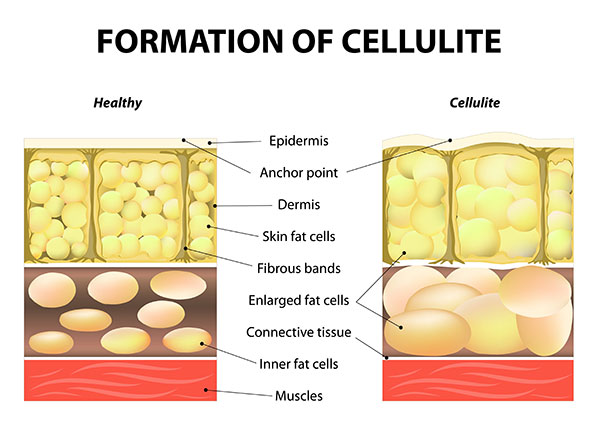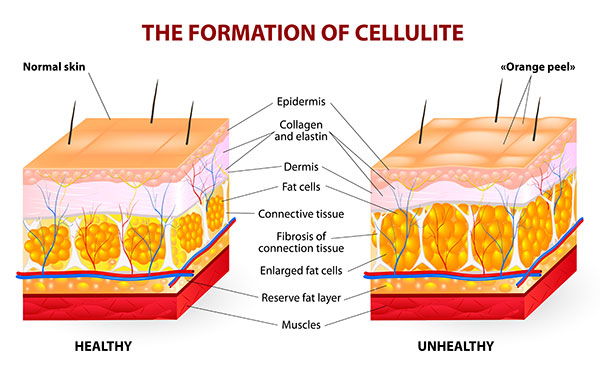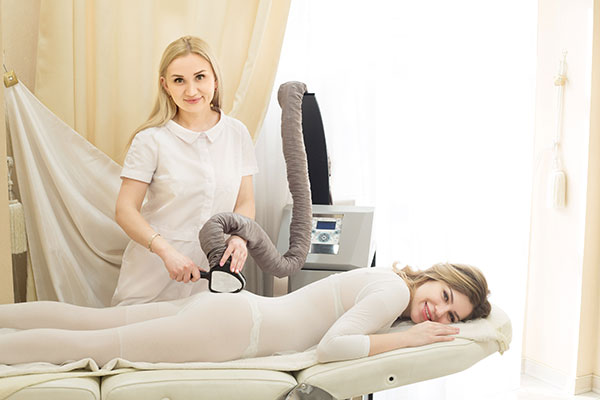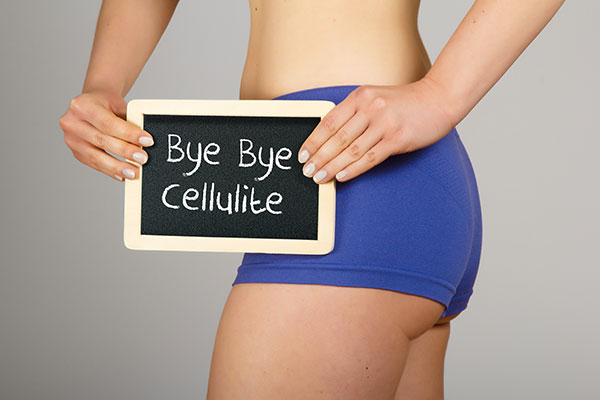Have you ever been living your life normally, wearing clothes you like to wear when suddenly you notice bumps, lumps, and dimples on your thighs resembling the texture of cottage cheese? Cottage cheese thighs or cellulite is not only unpleasant to see but can be hard to get rid off.
Cellulite is a common skin problem among both men and women, young and old. But what is it? What causes it and how can it be treated? Find out in the next sections of this article!
1. What Are Cottage Cheese Thighs?

Cellulite on the thighs, also known medically as gynoid lipodystrophy or colloquially as orange peel syndrome, hail damage, mattress phenomenon, or cottage cheese thighs, is characterized by the dimpled, dented, bumpy, or lumpy appearance of the skin.
This is due to the way underlying fat deposits are stored in fat cells underneath the skin surface. Cellulite can appear on the stomach, buttocks, hips thighs, and arms.
Cellulite is more common in women after puberty affecting around 85 to 98% of adult females most of whom are Caucasian and a small portion of Asian and Black women. This is due to the differences in how body fat and connective tissues are distributed. It can also affect men and younger females.
2. Cellulite has three different stages depending on appearance and severity. These are:

- Stage 1: This stage is characterized by cellulite lumps that are not visible to the naked eye. However, they can be seen once the skin is pulled or when the cells are examined closely under a microscope.
- Stage 2: At this stage, the skin with cellulite is noticeably more pale than the rest of the body and surrounding skin. This is due to the fats underneath that are causing the skin to be stretched. The surrounding skin may also be colder to the touch, less elastic, and may already show an obvious difference in overall appearance.
- Stage 3: The skin with cellulite is now visibly bumpy and feels dimpled and bumpy when touched on top of the other symptoms of stage 2 cellulite.
3. What Causes Cottage Cheese Thighs?

Cottage cheese thighs is a disorder of the innermost layer of the skin called subcutaneous layer. The subcutaneous layer consists of fat stores, small blood vessels, nerves, and connective tissues that insulate the body and regulate our temperature.
Cottage cheese thighs appear due to the following issues in the subcutaneous layer:
- Constriction of the blood vessels in the subcutaneous layer
- Poor lymph drainage
- Rapid increase in fibrous tissues
- Tissue damage
- Uneven thickness of the skin
- Herniation or protrusion of fat deposits through the skin layers.
- Hormonal imbalances or irregularities especially during pregnancy or menstruation. Some doctors and scientists believe that insulin, noradrenaline, estrogen, prolactin, thyroid, and other hormone irregularities contribute largely to cellulite production. Estrogen may also be the main hormone causing cellulite, which is also probably why the condition is more common in women.
- Genetic factors, making some individuals more predisposed to develop cellulite
- Lack of regular exercise
- Increased insulin levels
- Weight gain (Cellulite is more prevalent in overweight and obese women although it is also seen in those of normal weight)
- A diet that’s high in carbohydrates and salts
- Prolonged standing or sitting that hinders the normal blood flow
In a study by Khan and his colleagues published in the Journal of the American Academy of Dermatology in 2010, cellulite causes have been described to be due to biochemical, morphologic, histochemical, inflammatory, and ultrastructural changes. These include the following factors that increase the risk of women to develop the condition:

4.Other Possible Factors And Causes Are:

- Tight clothes, pants, or underwear that restrict the blood flow on the thighs and buttocks. This aggravates cellulite formation on the pinched areas.
- Stressful lifestyle. A high-stress environment or life can increase the number of catecholamines in the body, which are neurotransmitters like dopamine and epinephrine that affect the sympathetic nervous system. When there is a high level of these substances in the blood, problems associated with blood pressure, heart rate, carbohydrate metabolism, and cardiac output arise. This also plays an important role in cellulite formation.
Related:- THE FOUR F’s OF CELLULITE YOU MUST KNOW! THE CELLULITE TREATMENT
5. Treatments: How Do You Get Rid Of Cottage Cheese Legs And Thighs?

Because of these causes, it will be impossible to prevent cellulite. Fortunately, there are many possible ways to eliminate cellulite or reduce its appearance. These include the following:
- Dietary changes. Incorporating healthy carbohydrates such as whole grains, vegetables, and fruits in your diet can lessen your cellulite woes. You should also eliminate or avoid soda, coffee, and alcohol consumption. Eat more fiber-rich, low-fat foods.
- Exercise regularly. Not only does regular exercise assist in weight loss by burning fat, but it also helps tone your muscles, improve circulation, boost your energy levels, improve heart health, and firm up tissues. You can also try specific cottage cheese thighs workout routines that target problem areas. Weightlifting and This will make cellulite less visible as well as enhance your emotional, mental, spiritual, and physical well-being.
- Destress and relax. Avoid things that stress you out and observe relaxation techniques such as yoga, meditation, or hot bubble baths. This will encourage circulation to release toxins and can improve your skin’s quality.
- Get a massage. Massages can help relieve tension and stimulate your lymphatic and circulatory systems. This assists in preventing future cellulite formation and reducing existent cellulite.
- Dry brushing. This practice helps get rid of toxins and improve blood circulation. Use a natural brush with natural bristles every day before taking a shower.
- Hormonal pills or anti-cellulite pills. These target hormonal imbalances.
- Home remedies like herbal medicines, body scrubs, spice rubs, wraps, and masks. Usually, these remedies aim to increase circulation and even out the skin surface to reduce the appearance of cellulite lumps.
- Topical creams that increase collagen production can also help reduce cellulite. A great example that you can try is Beverly Hills MD Dermal Repair Complexn. It is an effective skin-firming cellulite treatment cream that can significantly reduce cellulite appearance, improve the skin’s quality, and delivers and locks in moisture for a softer, plumper, more even skin texture.
- Other surgical and nonsurgical treatments like ultrasound, peroxisome proliferator-activated receptors (PPARs), endermologie, intense pulsed light (IPL), radiofrequency waves, fat cryolysis, carboxytherapy, vasodilation, liposuction, and skin lifts. Liposuction and other invasive techniques that require surgical procedures, however, are not always recommended because they can lead to infections, allergic reactions, localized edema, tender nodules, bleeding, and skin irregularities.

Cottage cheese thighs or cellulite is an embarrassing and annoying skin condition. Although Khan and his colleagues stress that all currently available treatments only offer mild and temporary improvements, they can still help reduce the appearance of cellulite.
“Hope you find the post helpful and we are excited to hear what you think of it!”






